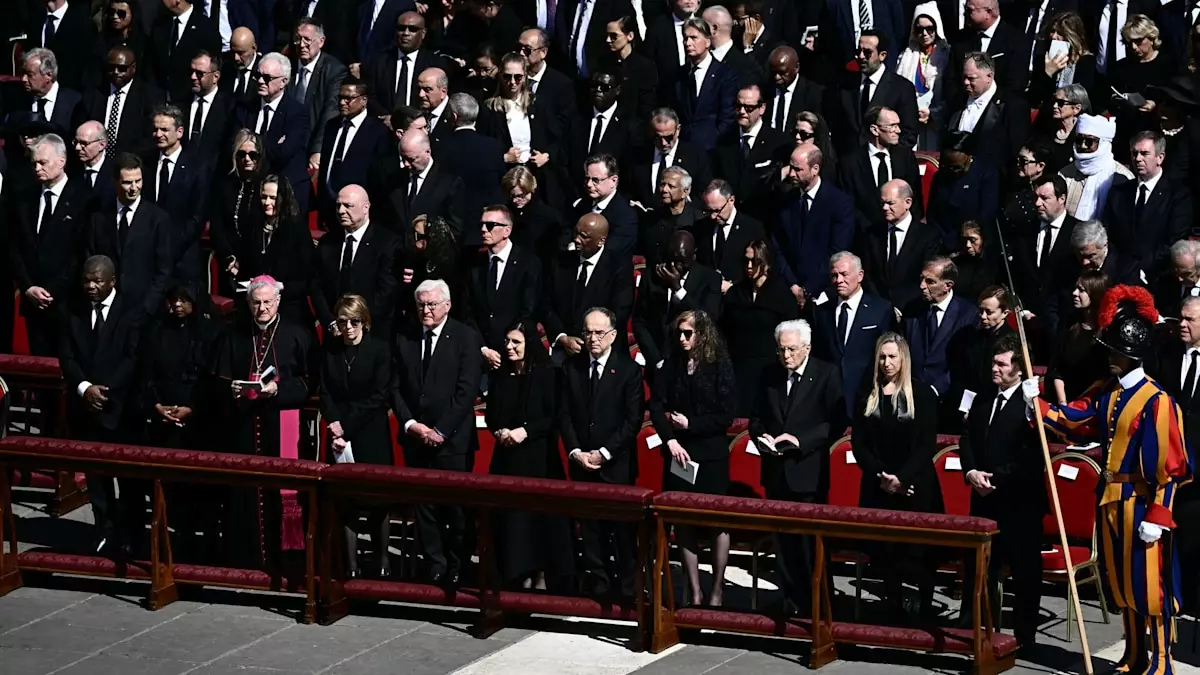The seating arrangements during significant global events often ignite discussions that reveal more than mere logistics; they expose the delicate balance of power, tradition, and class. The world witnessed such an example during the recent funeral of Pope Francis, where Prince William and UK Prime Minister Sir Keir Starmer found themselves seated in a manner that initially perplexed royal watchers and political observers alike. The strategic placement in a sea of global dignitaries and royals was anything but mundane, reflecting a greater nuance of international relations and the subtleties of protocol.
What struck many observers was the seeming detachment of the British royal from the immediate action unfolding at St. Peter’s Basilica. While other prominent figures, such as U.S. President Donald Trump, garnered prime seats way ahead in the arrangement, Prince William stood in somber reflection several rows back. This pointed positioning relegated him just behind a row of Jordanian royals, sparking intrigue about the criteria used for seating during this high-profile ceremony.
Decoding the Hierarchy: A Linguistic and Diplomatic Strategy
It emerged that this seemingly chaotic seating map was rooted in a deliberate and thoughtful strategy designed by Cardinal Vincent Nichols, the head of the Catholic Church in England and Wales. Far from being an oversight or sign of diminished importance, the curious arrangement was part of a “master plan” aimed at managing the egos of world leaders who often perceive themselves as paramount figures on the global stage. The alphabetical seating order, done in French—widely regarded as the language of diplomacy—was carefully executed to maintain a sense of equality among attendees.
Indeed, most nations would naturally expect to be seated according to their prominence—however, the French-language precedent turned this expectation upside down. The positioning of nations based on their diplomatic nomenclature placed the U.S. earlier in the lineup, as “Etats-Unis d’Amerique,” but relegated the UK further down the list under “Royaume-Uni.” This strategy demonstrates an understanding of the psychological landscape of international diplomacy—making sure that no leader’s stature feels overshadowed, while still carefully orchestrating a nuanced dynamic among varied dignitaries.
Tradition Meets Modernity
The decision to send Prince William in place of King Charles III—including the notable absence of Kate, Princess of Wales—further emphasized the Royal Family’s adherence to modern practices in ceremonial representation. Charles had previously fulfilled a similar role in 2005 at Pope John Paul II’s funeral, maintaining a tradition of participation in significant moments of interfaith respect. By delegating this duty to his son, Charles showcased the evolving nature of royal representation while still grounding it in historical ties, signifying respect toward the Catholic Church—the very institution that embodies over two billion adherents around the globe.
Moreover, the absence of Princess Kate, attributed to family commitments, served as another reflection of modern parenthood and the shifting dynamics of royal duty. It is increasingly apparent that the Royal Family is recalibrating its engagement with the public sphere, allowing for personal commitment to take precedence alongside official obligations, thus revealing a more relatable side to royal representation.
A Masterclass in Event Management
Cardinal Nichols’ insights into the meticulously orchestrated seating arrangements at Pope Francis’ funeral provide a glimpse into the remarkable capabilities of the Vatican when it comes to managing high-stakes, high-profile gatherings. He characterized the whole ceremony as an exemplary performance of stage management, likening the Vatican’s expertise in such matters to a long history of adeptness at navigating political waters—dating back to when emperors ruled Rome.
This event illustrates a broader principle relevant to both national and international relations: how even the smallest elements—like seating arrangements—can reflect intricate power dynamics and societal hierarchies. In an era where image can make or break diplomatic ties, the Vatican demonstrated not just awareness of these factors but an ability to harness them effectively. As leaders departed from the service, they were likely beaming with their respective roles reaffirmed, their egos soothed, yet still wedged within a broader tapestry of international camaraderie that such global occasions strive to achieve.

